Changing light
This week: Changing light; Autumn harvest; Getting ready for construction; Picking and planting; End of season fruit;
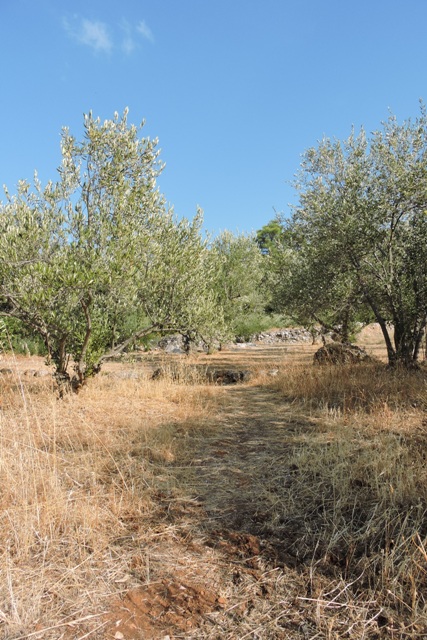
Here we are again on a hot and humid Saturday afternoon. Another week has flashed past in the twinkle of an eye.
Argen is curled up on my knee asleep, because we’ve had a busy morning!
I was picking almonds and as fast as I put them in the bag, he was removing them to play with. It’s not the most efficient way to harvest anything…
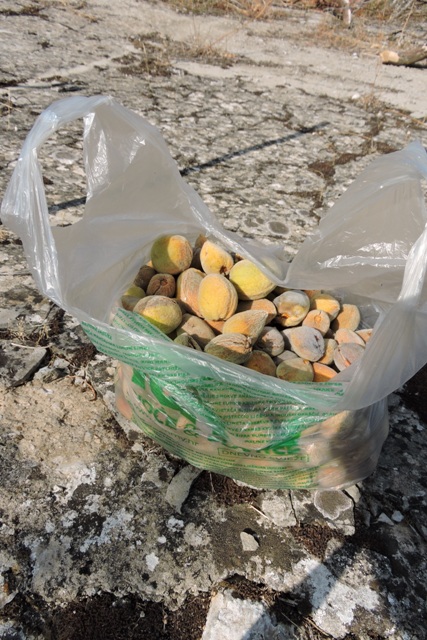
The days are still hot, although not as hot at July (38ºC), or for as long.
I can work outside reasonably comfortably until 11am, instead of until just 9am in high summer.
My photo scanning came to an abrupt halt this week when a Windows update failed and I am unable to start the computer. Calls to Microsoft have gone unanswered and the on-line remedies have so for not worked either.
It is rather disappointing because I had connected all the scanners, installed software and done a couple of trial scans and it was all looking good.
Although I have brushed that problem off in the two paragraphs above, I have actually spent a lot of time trying to get back to where I was on Tuesday lunchtime!
Oh well, that’s life I suppose….
Changing light
This week the change in the light was noticable.
Not today, because as we perspire on another 33ºC day, there is a significant heat haze, but early and late, there is the change in the light intensity which tells me Autumn is already here.
On my study wall I have two large framed photos of Seattle and San Francisco from Space. I bought them from the book store when I was at Stanford University, in the heart of what is now Silicon Valley.
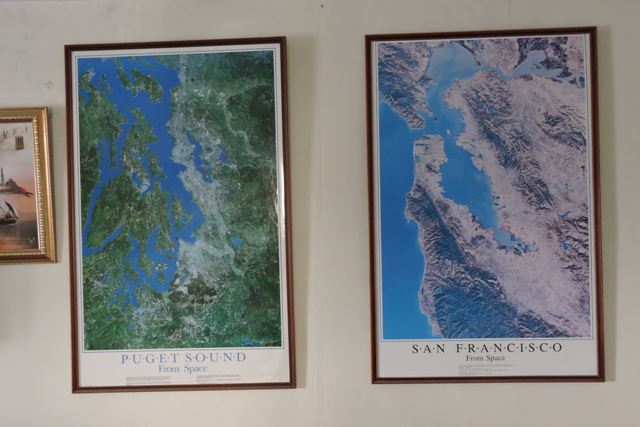
Back in the mid 1980’s they were the only way you could see earth from space.
Today I can go to Google Earth on this computer and bring up the same image for free. The image is in much greater detail and I can go back over the past 15 years to see how things have changed over time.
However it was not until the dawn of the space age that there were any photographs of our “blue marble” from space. There is an interesting story about how the photograph came about here.

The photograph was taken on December 7th, 1972 and was the first ever to show our planet as a whole sphere. It is the only one taken by a man. All future similar images are from satellites.
Just as has happened since the dawn of time, we see the sun rise, transit across the sky and set. It is easy to understand how people without scientific instruments could believe everything rotated around the earth.
It was heresy, punishable by death, to suggest otherwise for many centuries.
Today we understand that the earth is tilted on an axis of 23.5º.
As the planet rotates around the sun, so our seasons change because the angle of the sunlight falling at different times of year changes.
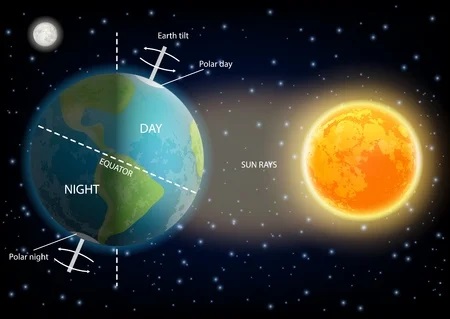
In my Orchard, I am watering earlier every day, because by 20:00 it is now dark.
As well as the advancing seasons, the rising hillside to the west means that the effect of an earlier sunset every day is magnified in the orchard
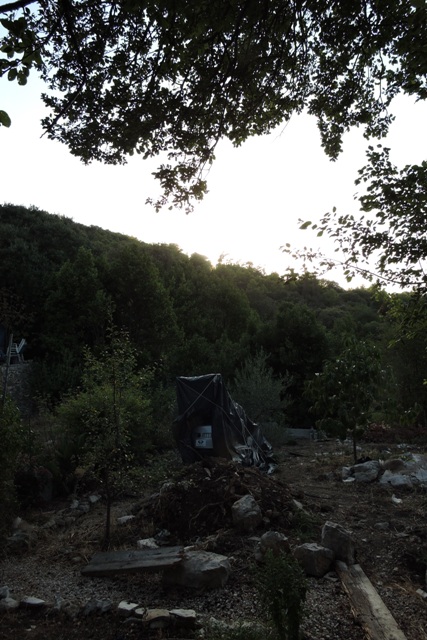
In summer the sun goes behind the hill around 20:00 at the extreme right of the photo. Today it is in the middle, by the Autumn Equinox it will be by 17:30 on the extreme left.
As both hemispheres head towards their autumnal equinox, which are six months apart, the tilt of the earth, away from the sun means a longer and weaker ray of light is cast on land.
Shadows are longer and the quality of the light changes. The further from the equator you are, the more oblique the angle.

The angle of the sun changes how we perceive light and colour and the change is speeding up every day until the 23rd September.
From the equinox it will start to slow until the winter solstice.
The start of the autumn rains clear pollution from the atmosphere but as the sun is lower in the sky too, how we perceive light changes.
I wish I had a camera sensitive enough to record these changes in the light.
Autumn harvest
Every evening as I leave my gate to go for a walk, I pass my old Almond tree if I am going east.
It is one of my indicator species in my Springwatch calendar. The first blossom in 2022 opened on 17th February and it was in full blossom on 23rd February.
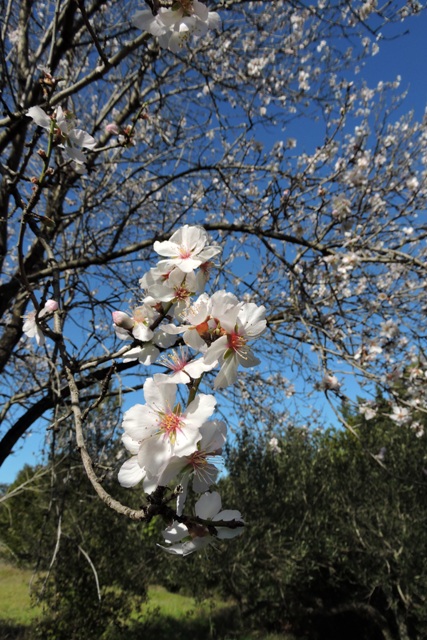
For the past week I have noticed that some almonds have been dropping, so I decided to pick the ones in easy reach.
After pollination, the almond fruit begins to swell. The large greenish fruit you see is a husk or exocarp, with a soft fleshy inner. In the centre the seed forms inside a hard shell.
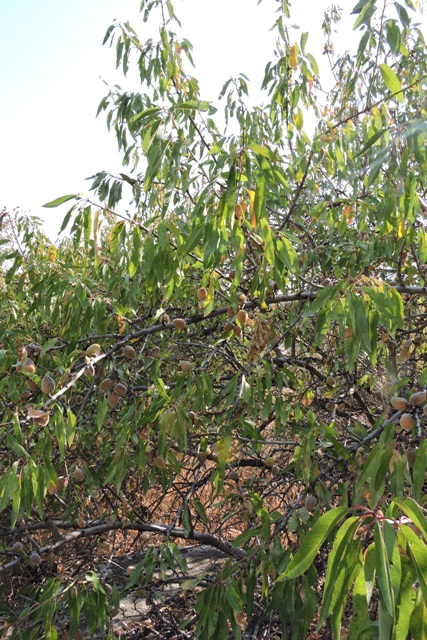
It is the seed which we eat after the exocap has shrivelled and the nut has been cracked open.
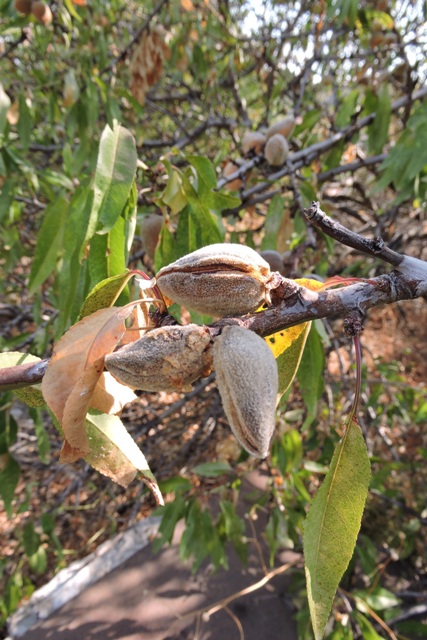
The almond tree is native to Iran and is in the same family as plums, the Prunus genus, with the sweet variety we eat being Prunus Amygdalus.
After filling a large bag, I emptied the contents on to paper on the terrace. Some of the husks are still a little soft, although many are splitting, the tell tale sign that they are ripe.
The old books say that the fruit should detach easily from the branches (they did) and then should be dried in sunshine for a few days to make the nut easy to access.
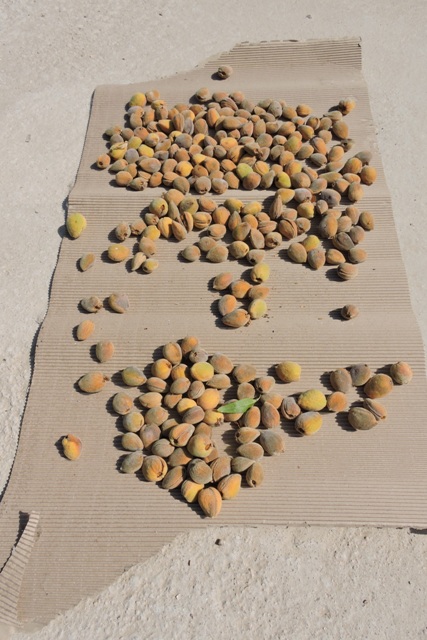
Once completely dry, the nut can be cracked to get the kernel, the bit we eat.
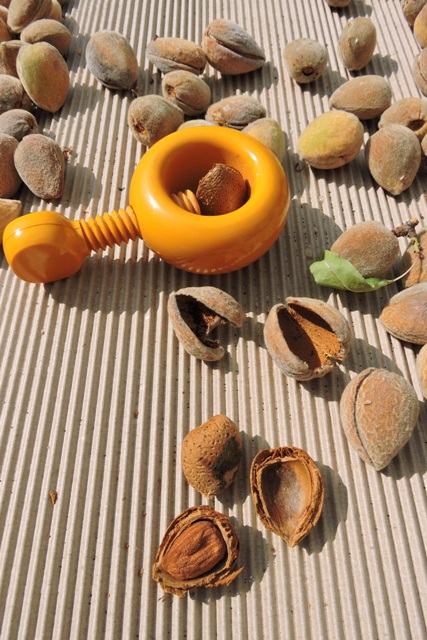
Like everything ‘Home grown’, fresh almonds, straight from the shell taste nothing like the ones you buy in packets from the supermarket.
They are firm but soft with a milky consistency and an intense sweet almond essence flavour.
I’m reminded of growing up at home when the Christmas Cake was always baked in September, using fresh almonds.
The cake was “fed” with alcohol every few weeks so it was steeped in time for being iced and then cut on Christmas day.
Isn’t it funny the things that you remember….
Getting ready for construction
For regular readers, no this isn’t the construction of my long awaited extension, although the architect has been in touch this week to say that work is progressing on getting permission (at last!).
Here I am thinking of my “Poly Tunnel” in the top orchard.

Once again I am experimenting and building it myself. It will be against a south facing wall, so it will get what winter sunshine reaches the top orchard.
The steel rebar hoops are already in place, but instead of a plastic cover, I am going to construct a dual cover where the top is fixed thermopalstic sheets, but the sides change in winter and summer.
In winter I will have plastic sheeting, to let light in and retain warmth inside. As soon as the weather warms, I will wrap the plastic up and fix shade netting so plants inside don’t bake.
Because of BREXIT it is no longer cost effective to buy anything from the UK, so I ordered all the stainless steel hardware I need from China.
It took just three weeks from ordering for the boxes to arrive this week.
They are way ahead of the forecast delivery date, so I was taken by surprise and have been doing preparation work inside to catch up.
When I say inside, it is all open to the elements at the moment, what I mean is the area that will be “inside” when I have the roof and end wall constructed.
I raked away the remains of this year’s vegetables and was thinking about putting the mini tiller in, but it is just too dry.
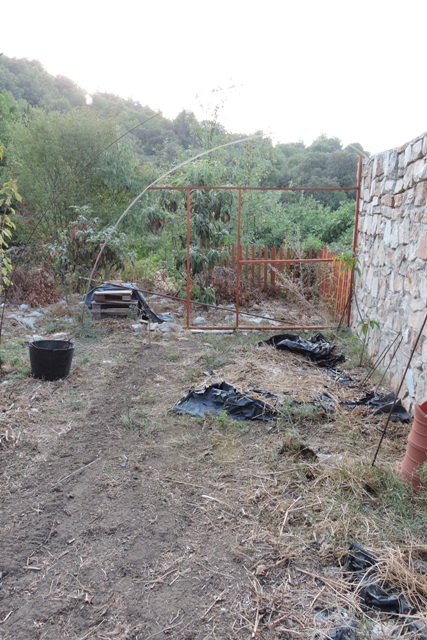
The soil has no moisture at all and as soon as the baked surface crust is broken, underneath it is just dust.
I am always up for an experiment, so with the slight possibility of a small amount of rain on Sunday morning, I have planted a row of Broad Beans (Fava Beans) and some late French Beans, to see what happenes.
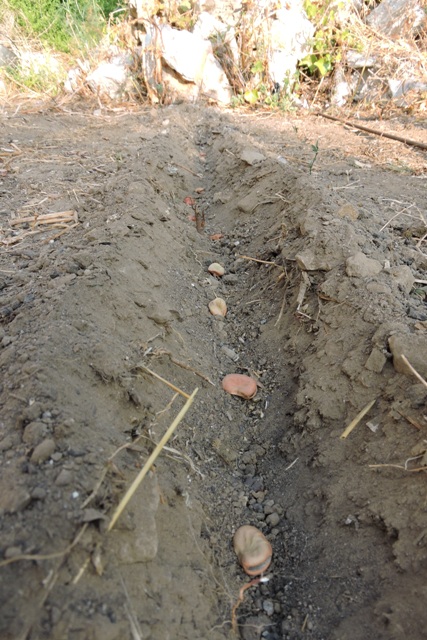
There is a lot of unused space at the moment, so I also planted a half row of Rocket, as winter green leaves and I’ll plant another couple of rows in succession.
I really do not know how a poly tunnel will work here.
I see one or two on commercial smallholdings, but after a couple of years the plastic covers have rotted in the sunshine and the wind has shredded them.
Seldom are the covers replaced, which suggest they are a one-season wonder.
I am hoping that my idea of a mixed hard and soft cover, with winter and summer options will last a lot longer and may be more successful.
Picking and planting
I have had a bumper crop of figs this year, together with apricots, early plums and peaches.
Going out to dinner on Monday, I made a Fig and Peach Galette for the dessert. When I make one of something, I generally double the quantity and make two, the second going in the freezer for winter.
Galettes are very easy to prepare.
It is a pastry base, with a layer of jam spread across it, then whole fruits are added. Here for me it is a trip into the orchards to pick the last of the peaches, some figs and a couple of lemons.

250 ml of Mascarpone is mixed with the zest, pulp and juice of a lemon and poured over the top. More fruit is added as decoration on top of the Mascarpone.
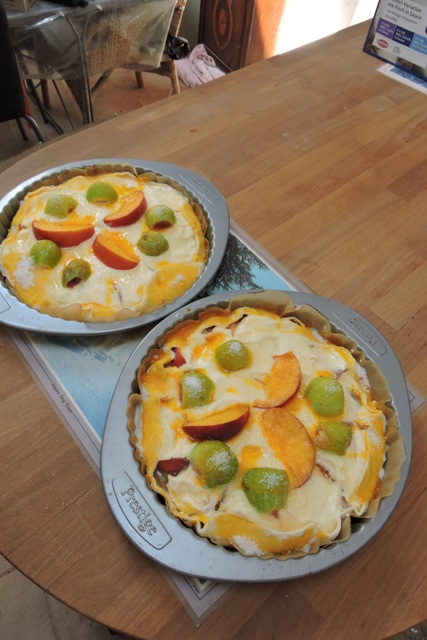
The exposed pastry edges are painted with a beaten egg yolk and then dusted with sugar and the whole things is cooked at 180ºC for 45 minutes.
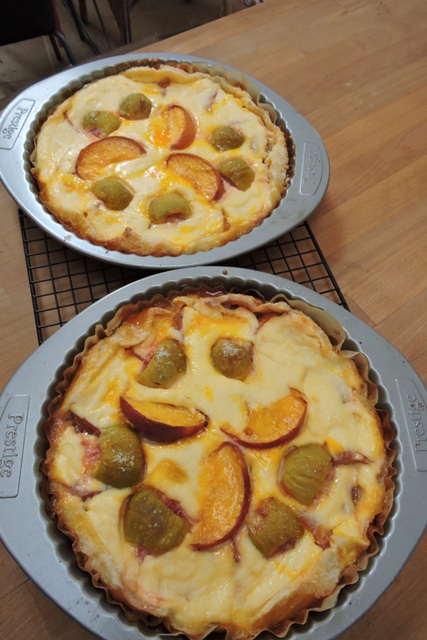
End of season fruit
There are still a lot of figs left. The trees began producing earlier than normal, and now it is the later forming fruit which are coming ripe.
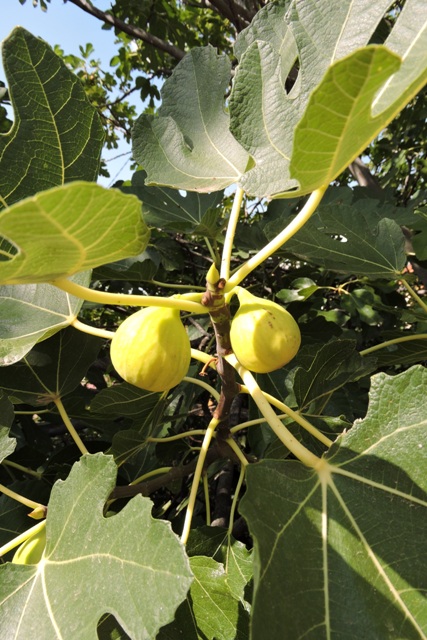
It is just too tempting not to pick one (or three) as you walk past a tree.
I have three varieties, Brunswick, the traditional Ficus Carica Green fig, and Brown Turkey.
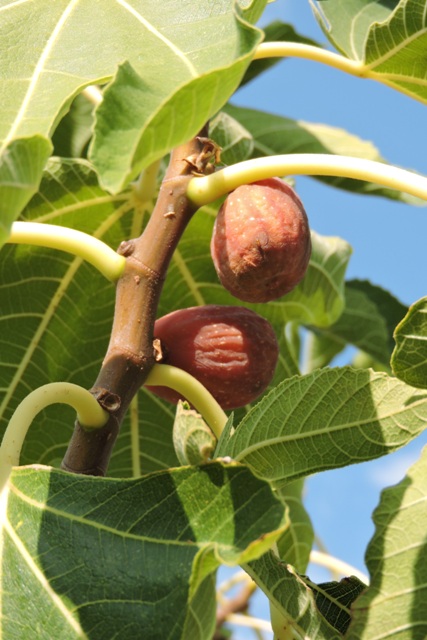
The Brown Turkey are small this year, probably because of the dry summer, but they are very tasty, with a flavour of toffee.
In the flower beds, my Alstromeria are still flowering, adding bright colours to an otherwise dry and drab border.
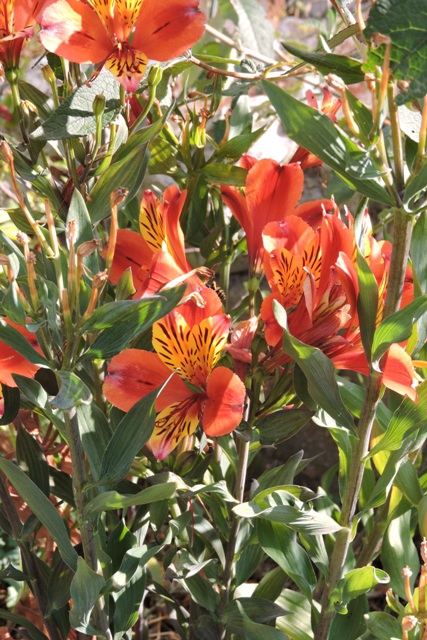
As the days shorten and the nights lengthen, there is still much which the Autumn season has to offer. I just hope that there will be some significant rain soon. NCG
3 Responses
Brian Homans
The galettes look delicious!
Tony Griggs
Fruit looks delicious Norman. We’ve got a fig tree in our little orchard that produced amazing quantities this year! First signs of spring here in the Southern Hemisphere. We still have windy September to go yet though with lots of lashings of rain! Been a cold wet winter which is like it used to be. Enjoy yr autumn there, my favourite time of the year here. I lost 7 autumns at home when in the M/E!
Marcy
I adore figs. My grandmother had a fig bush in her backyard. It was a treat to pick a fresh fig and eat. I love the look of those peaches as well. Such a green thumb.
Had an almond education from this blog. Thank you. Stay safe.